Author: Ryan Hansen
Sour beer has been around for as long as beer has been a thing, in fact there’s a high likelihood most of the earliest versions of beer were fermented with more than just brewer’s yeast. While brewers in some regions developed approaches to better control the outcome of their intentionally sour beers, the time it takes for certain souring bacteria to work was a barrier to many, though more recently, some methods have been developed to hasten the turnaround time of these unique styles.
The most prominent bacteria used to produce sour beer is lactobacillus, of which there are a few species. With the rising popularity of quick sour methods, many yeast labs have begun to produce pure lactobacillus cultures such as Imperial Yeast W25 Lacto. Brevis, which is said to produce a clean acidity in as little as 1 to 4 days. A more unique approach involves inoculating wort with probiotics such as Goodbelly, a typically fruit-flavored liquid drink that contains ample amounts of L. plantarum, which is lauded by many for its ability to quickly reduce the pH of wort.
I’ve made a few kettle sours over the years using a variety of yeasts and bacteria, and while my attempts have largely been successful, I’ve been curious how certain microbes compare. With a pouch of Imperial Yeast W25 Lacto. Brevis on-hand, I designed an xBmt to put a beer soured with it up against the same beer soured with Goodbelly.
| PURPOSE |
To evaluate the differences between a beer soured with Imperial Yeast W25 Lacto. Brevis and one soured with Goodbelly.
| METHODS |
For this xBmt, I designed a simple Straight Sour Beer recipe with the goal of ensuring any differences caused by the variable would be readily apparent.
Buddha Belly
Recipe Details
| Batch Size | Boil Time | IBU | SRM | Est. OG | Est. FG | ABV |
|---|---|---|---|---|---|---|
| 5.5 gal | 60 min | 3.8 | 4 SRM | 1.051 | 1.01 | 5.38 % |
| Actuals | 1.051 | 1.01 | 5.38 % | |||
Fermentables
| Name | Amount | % |
|---|---|---|
| Pilsner Malt | 8 lbs | 72.73 |
| White Malt (White) | 2 lbs | 18.18 |
| Acidulated | 1 lbs | 9.09 |
Hops
| Name | Amount | Time | Use | Form | Alpha % |
|---|---|---|---|---|---|
| Mosaic | 7 g | 10 min | Boil | Pellet | 12.3 |
Yeast
| Name | Lab | Attenuation | Temperature |
|---|---|---|---|
| Flagship (A07) | Imperial Yeast | 77% | 60.1°F - 72°F |
| Lacto. Brevis OR Goodbelly (32 oz/946 mL) (W25) | Imperial Yeast | 83% | 84.9°F - 100°F |
Notes
| Water Profile: Ca 50 | Mg 7 | Na 8 | SO4 70 | Cl 60 |
Download
| Download this recipe's BeerXML file |
While this variable would be introduced after the boil, I opted to brew separate 5 gallon/19 liter batches since both would be soured in the same kettle they were mashed in. As such, I started this brew day by collecting identical volumes of RO water in two identical kettles, adjusting them to the same mineral profile, then flipping the switches on my Clawhammer Supply 120v controllers to get them heating up.
I then weighed out and milled the grains.
With the waters properly heated, I incorporated the grains then set both controllers to maintain my desired mash temperature of 150°F/66°C. When the 60 minute mash rests were complete, I removed the grains and boiled each wort for 5 minutes before chilling them to 95°F/35°C before taking measurements showing both worts were at the same 1.040 pre-boil OG and 4.5 pH. At this point I inoculated one batch with a pouch of Imperial Yeast W25 Lacto. Brevis while the other was dosed with 32 fl oz/946 mL of Raspberry/Blackberry Goodbelly.
I took a number of pH measurements during the souring phase and found that after just 24 hours, the batch dosed with Goodbelly was at my target 2.9 pH while the Imperial Yeast W25 Lacto. Brevis batch had only dropped to 3.8 pH. Since I wasn’t looking to make a tooth enamel peeler, I proceeded with boiling the Goodbelly beer for 60 minutes to kill off the souring microbes, chilling it, and pitching the yeast. The other batch was left alone for another 24 hours, at which point it had stabilized at 3.4 pH.
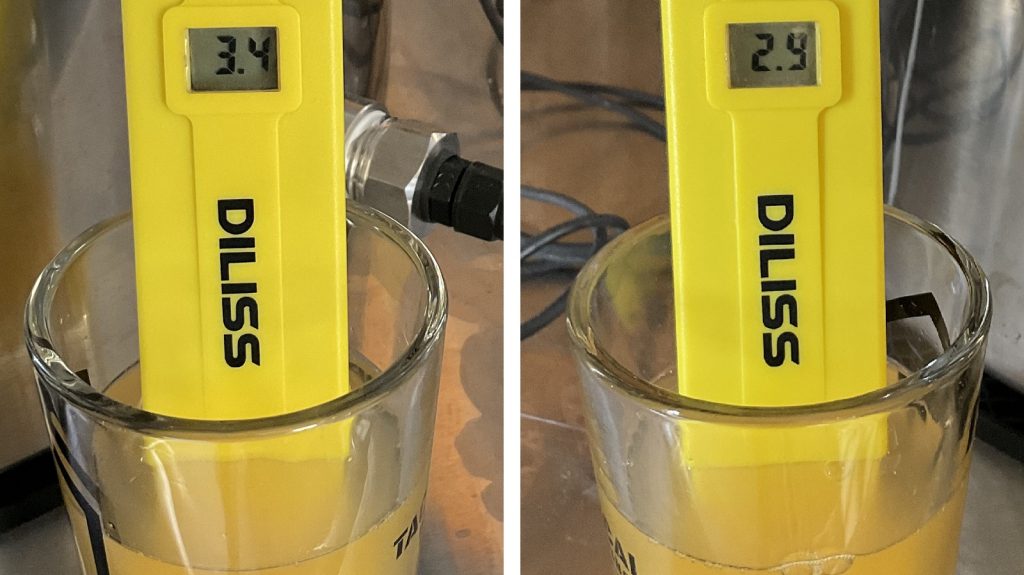
Next, I boiled the batch inoculated with Imperial Yeast W25 Lacto. Brevis, adding 32 fl oz/946 mL of Raspberry/Blackberry Goodbelly at the start of the boil in an attempt to isolate the variable specifically to the souring impact of each culture. This wort was then treated identical to the one dosed with Goodbelly the day prior, and hydrometer measurements showed they were at the same OG.
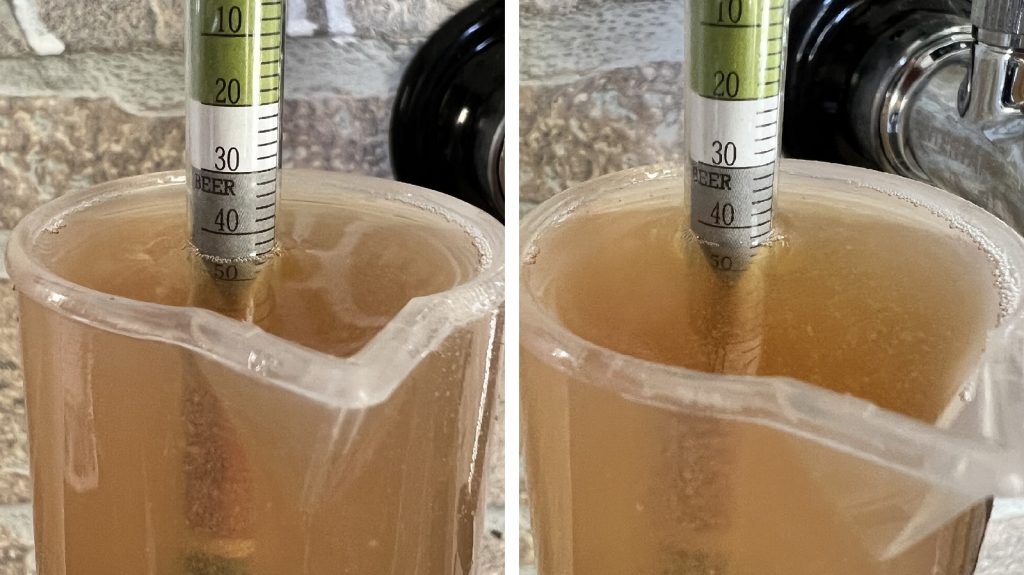
The fermenters were connected to my glycol unit set to my desired fermentation temperature of 68°F/20°C before I pitched a single pouch of Imperial Yeast A07 Flagship into each batch.
After 5 days of fermentation, I added 3 lbs of defrosted and mashed triple berry blend to each batch.
Following 5 more days of refermentation, signs of activity were absent in each batch, so I took hydrometer measurements confirming both beers were at the same FG.
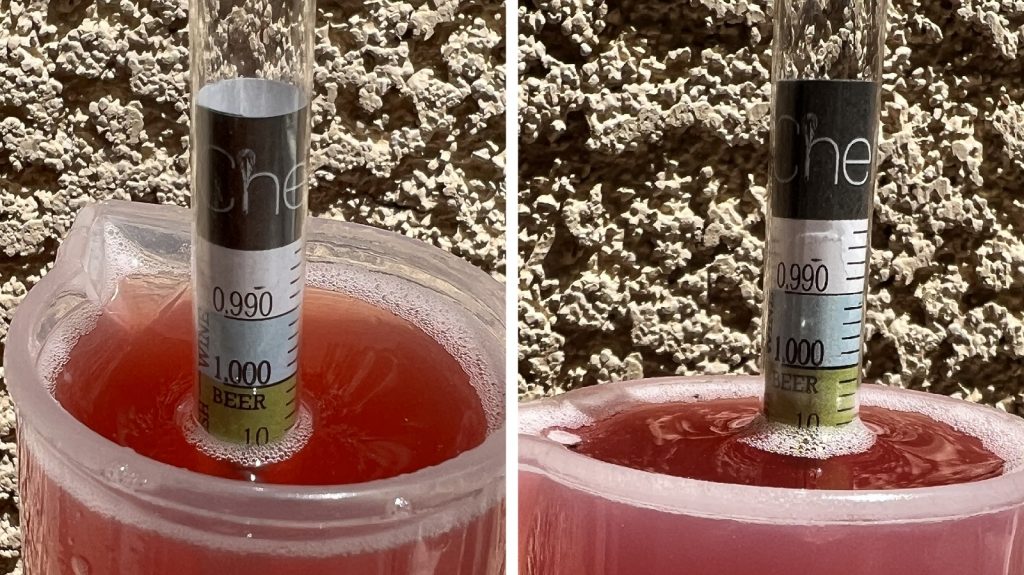
A final set of pH measurements showed that fermentation and the fruit addition brought the beers close to the same acidity level.
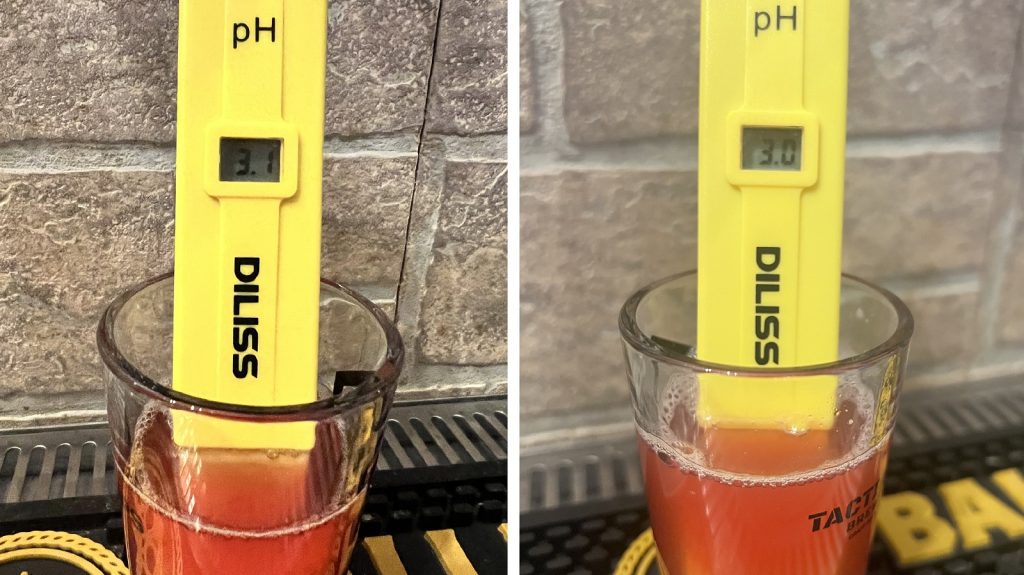
I cold-crashed the beers to 34°F/1°C overnight before pressure-transferring them to serving vessels.
The filled kegs were placed on gas in my cold box and left for 2 weeks before they were ready for evaluation.
| RESULTS |
A total of 31 people of varying levels of experience participated in this xBmt. Each participant was served 2 samples of the beer soured with Imperial Yeast W25 Lacto. Brevis and 1 sample of the beer soured with Goodbelly in different colored opaque cups then asked to identify the unique sample. While 16 tasters (p<0.05) would have had to accurately identify the unique sample in order to reach statistical significance, 19 did (p=0.001), indicating participants in this xBmt were able to reliably distinguish a Straight Sour Beer inoculated with Imperial Yeast W25 Lacto. Brevis from one inoculated with Goodbelly.
The 19 participants who made the accurate selection on the triangle test were instructed to complete a brief preference survey comparing only the beers that were different. A total of 6 tasters reported preferring the beer made with Imperial Yeast W25 Lacto. Brevis, 11 said they liked the beer soured with Goodbelly more, 1 had no preference despite noticing a difference, and 1 taster reported perceiving no difference.
My Impressions: Out of the 6 semi-blind triangle tests I attempted, I correctly identified the odd-beer-out 5 times. As consistent as this was, the beers were incredibly similar. I perceived the beer soured with Goodbelly as having a slightly more zesty tartness and a touch more body than the version soured with Imperial Yeast W25 Lacto. Brevis.
| DISCUSSION |
As delicious and complex as classic sour beer styles are, the time it takes to produce them is barrier to many brewers, hence the appeal of modern quick sour methods. While many labs have released pure lactobacillus cultures that provide some assurance to brewers, the use of probiotics is quite popular, with many claiming they result in faster souring with a touch more complexity. Interestingly, tasters in this xBmt were able to reliably distinguish a Straight Sour Beer inoculated with Imperial Yeast W25 Lacto. Brevis from one inoculated with Goodbelly.
One possible and seemingly obvious explanation for this finding is that the lactobacillus species used to sour each beer was different, indicating L. brevis produces different characteristics than L. plantarum. It’s also possible the pre-fermentation pH difference played a role, as the wort soured with the lab culture was 0.5 pH higher than the one soured with Goodbelly, though the finished beers were only 0.1 pH apart.
Ultimately, I was happy with how both of these beers turned out, and while I personally perceived them as being different, it was subtle enough to make choosing a favorite difficult. Since most of the sour beers I brew are planned last minute, being able to pop into the grocery store and drop a fairly small amount of cash on a probiotic is super convenient, so I’ll definitely be using Goodbelly more in the future, which isn’t to say I’m against lab cultures. I loved the batch soured with Imperial Yeast W25 Lacto. Brevis and would use it again in a heartbeat.
If you have any thoughts about this xBmt, please do not hesitate to share in the comments section below!
Support Brülosophy In Style!
All designs are available in various colors and sizes on Amazon!
Follow Brülosophy on:
FACEBOOK | TWITTER | INSTAGRAM
If you enjoy this stuff and feel compelled to support Brulosophy.com, please check out the Support page for details on how you can very easily do so. Thanks!


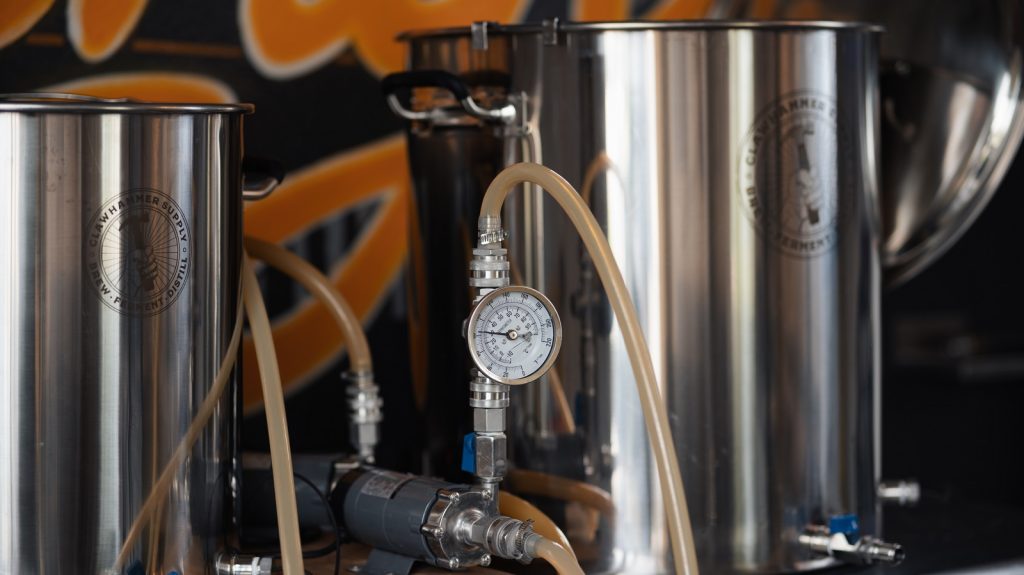
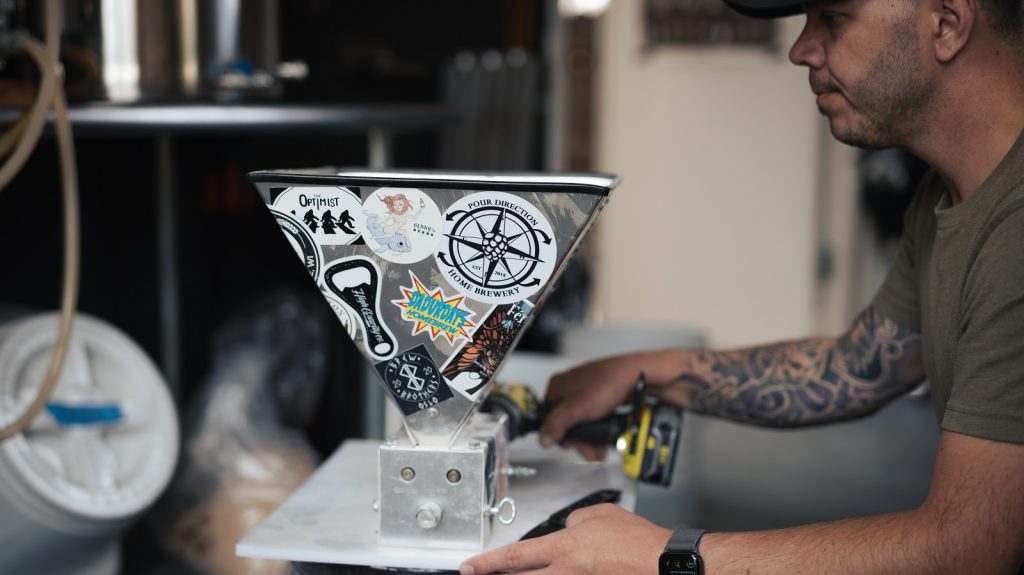
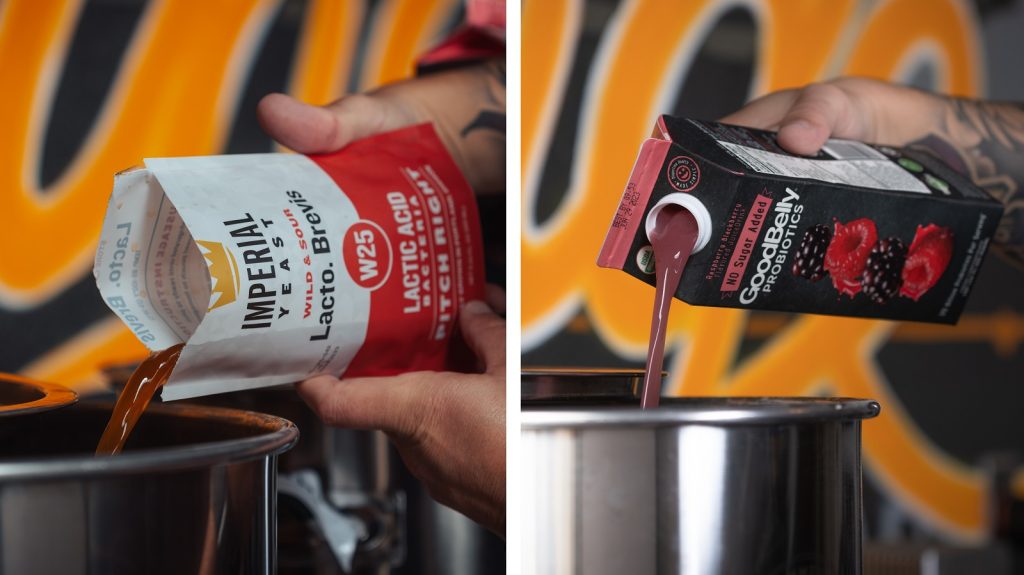
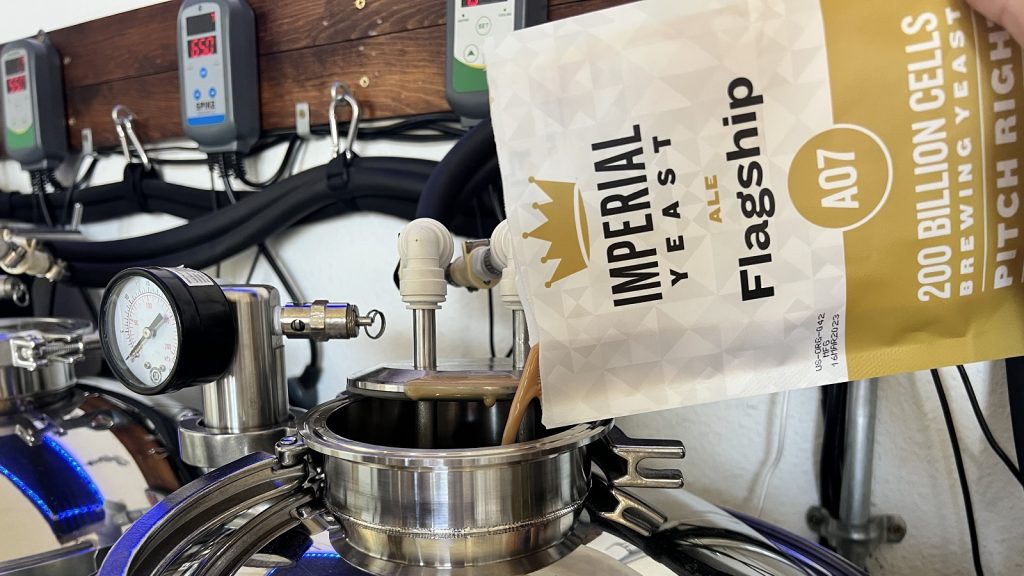
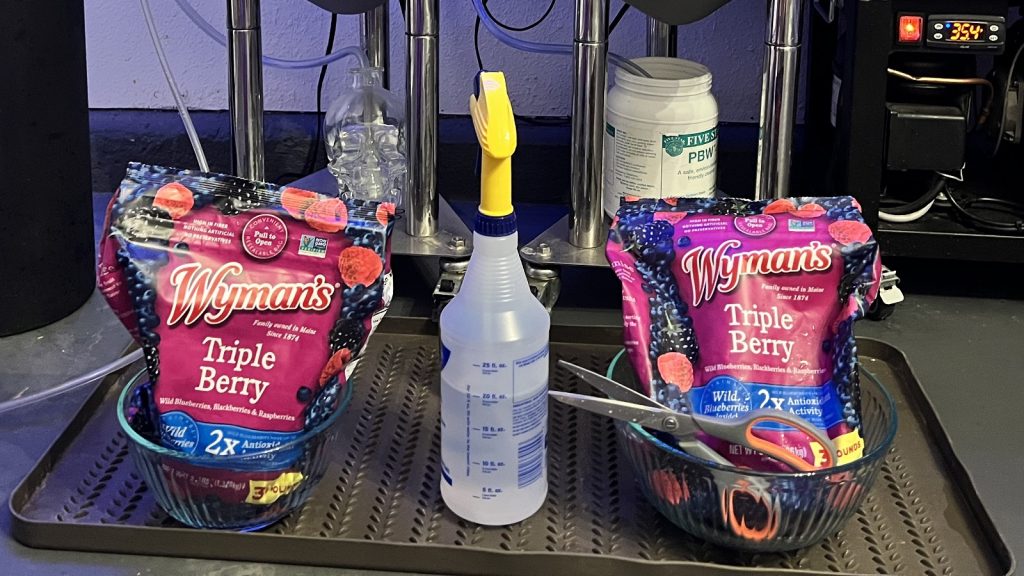
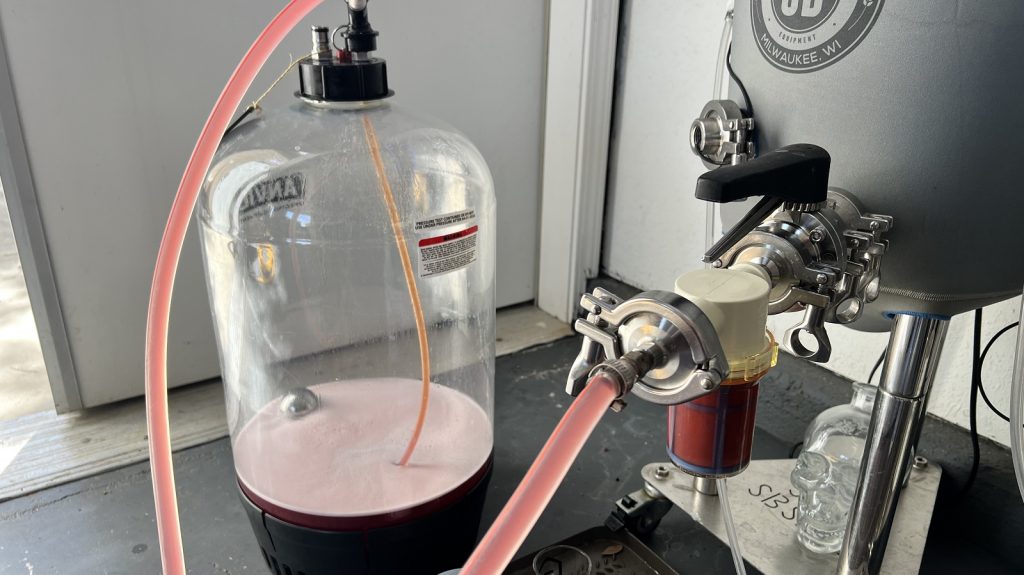
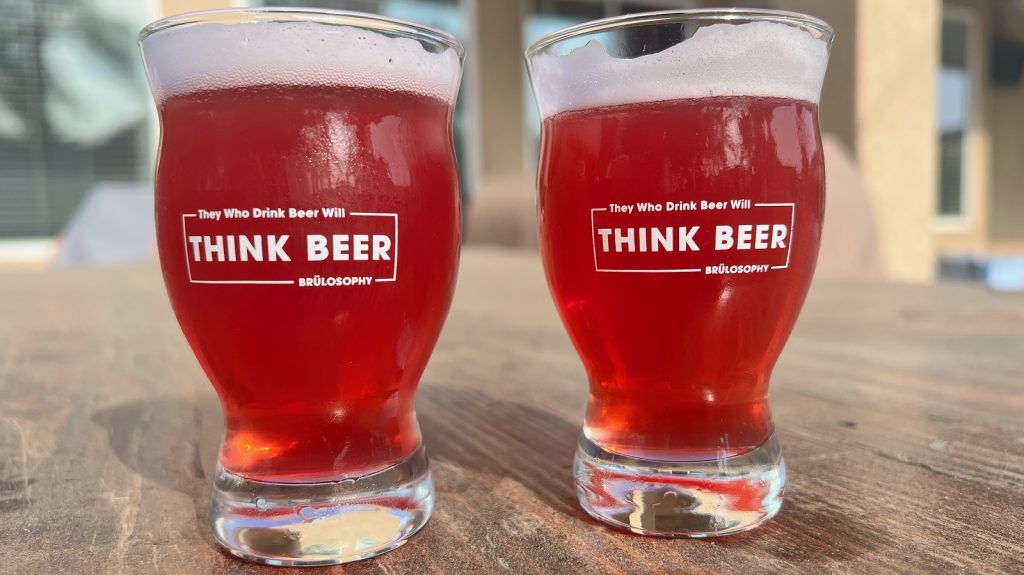











6 thoughts on “exBEERiment | Sour Beer: Imperial Yeast W25 Lacto. Brevis vs. Goodbelly In A Straight Sour Beer”
Funny timing… I’ve always used Omega’s Lacto blend, but I have a batch souring with Goodbelly in my kitchen as I type. $4 and easy access vs $15 for a special order through my LHBS was worth the shot, and sounds like maybe it was a good call!
so far it soured more quickly than the omega and didn’t smell like vomit… both wins!
Yeah, Goodbelly has always worked well for me!
Can you detail how you accomplished the souring phase – how did you minimize O2 exposure and maintain the temp of 95? Thanks! Dan
I’m not the one who did the experiment, but as I mentioned in my above comment, I’ve done a couple of beers with Omega Lacto and just put a Goodbelly sour in the fermenter today. Both of them have soured very well at room temp with no extreme measures to reduce oxygen exposure. I just put the lid on my kettle, saran wrapped it, and let it sit for 2 (Goodbelly) or 3 (Omega) days. Like I said, the Omega worked well but smelled kind of like vomit on day 3. The Goodbelly worked faster and did not have the vomit smell.
Sure thing. I don’t limit oxygen, I know some folks think that that is important, but I just wrap the lid onto the kettle to keep bugs and other bacteria/microbes out and I let it do its thing. For the temp control I keep my ClawHammer Supply electric controller set to 95 and it holds it rock steady with the heating element in the kettle. Works like a charm!